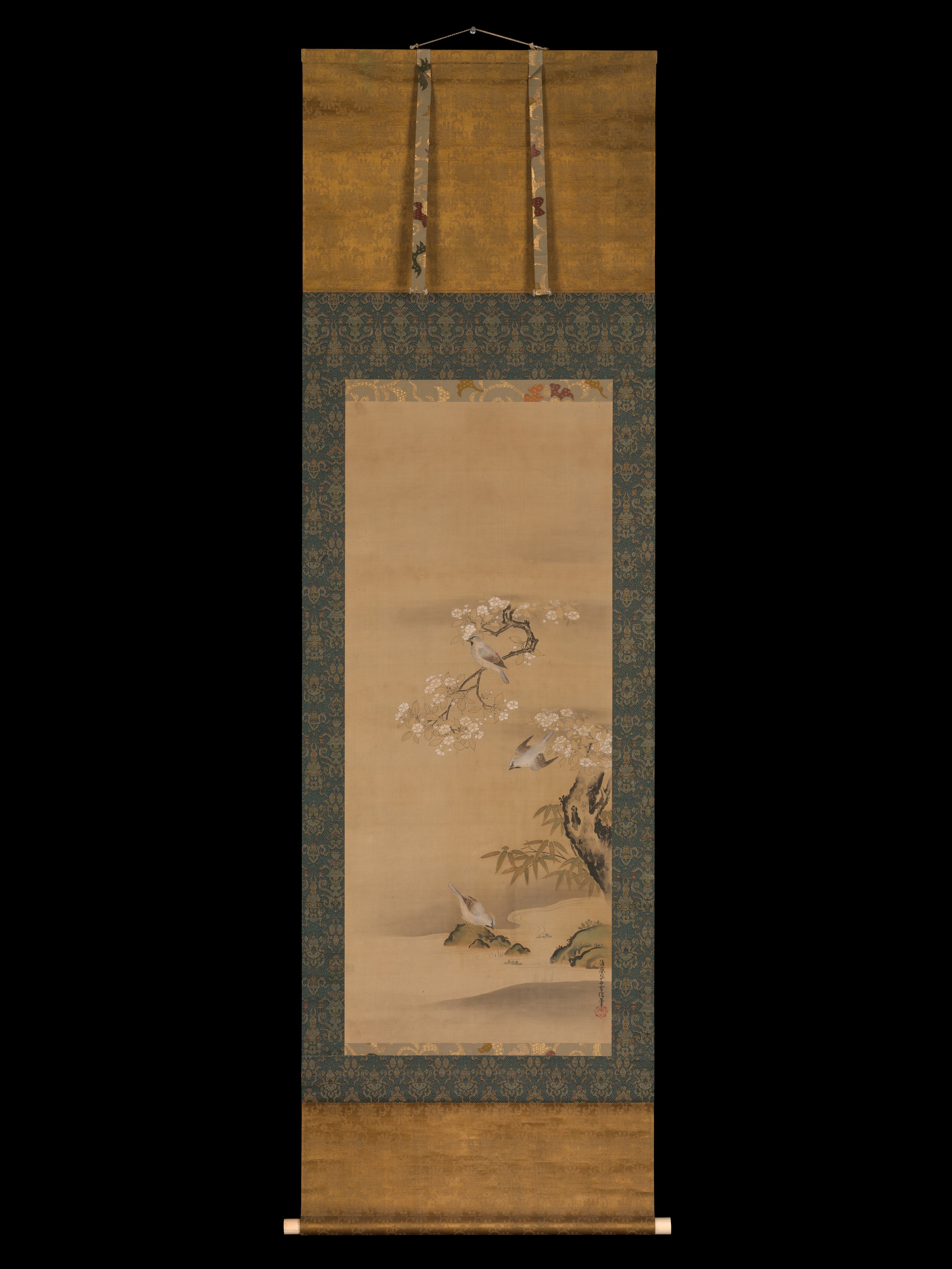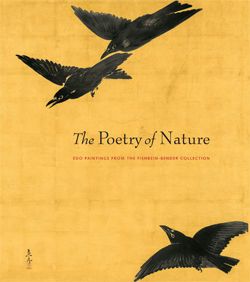Waxwings, Cherry Blossoms, and Bamboo
Kiyohara Yukinobu Japanese
Not on view
Kiyohara Yukinobu was known in the early Edo period as a “woman highly accomplished in the arts,” or keishū. Her husband was a pupil of Kano Tan’yū, one of the most prominent painters of the age, and she herself, as Tan’yū’s grandniece, may have studied with him. Here, she depicts three waxwings (Japanese: hirenjaku) in various poses: one rests serenely on the branch of an aged cherry tree in full bloom, indicating a late spring setting; one is captured in flight; and the third perches on a rock, espying insect prey in a stream. Since waxwings, after mating, rub their heads together in a way that suggests a display of mutual affection, they came to be a symbol of marital harmony and familial prosperity, which is one possible interpretation of the painting.
This image cannot be enlarged, viewed at full screen, or downloaded.
This artwork is meant to be viewed from right to left. Scroll left to view more.




